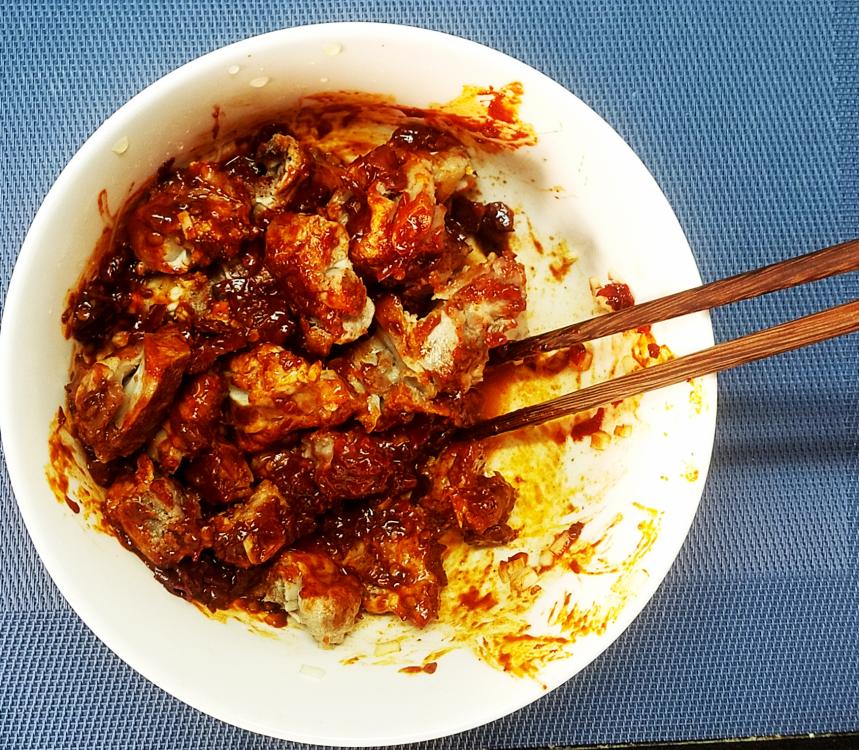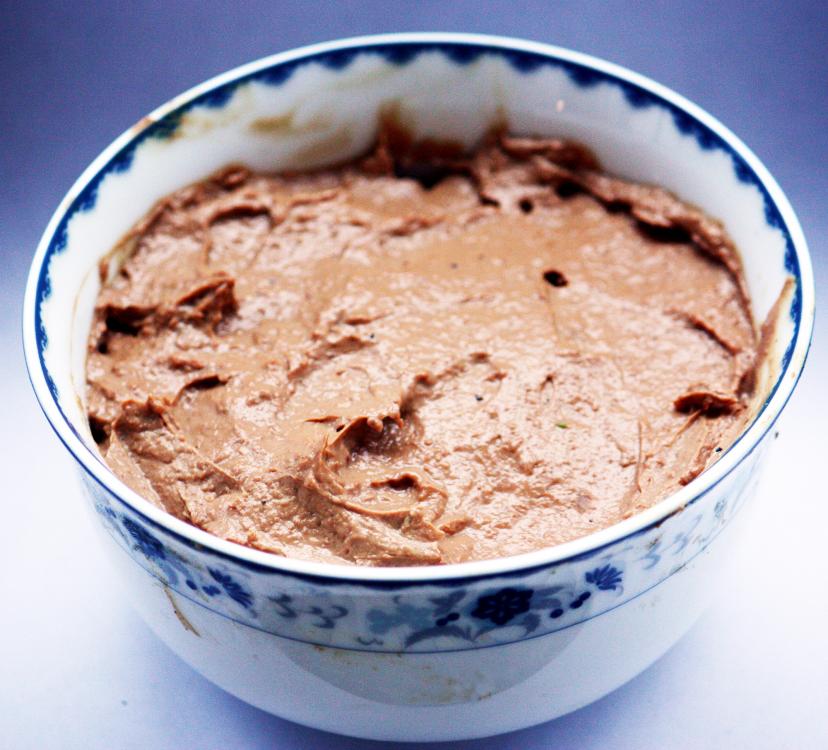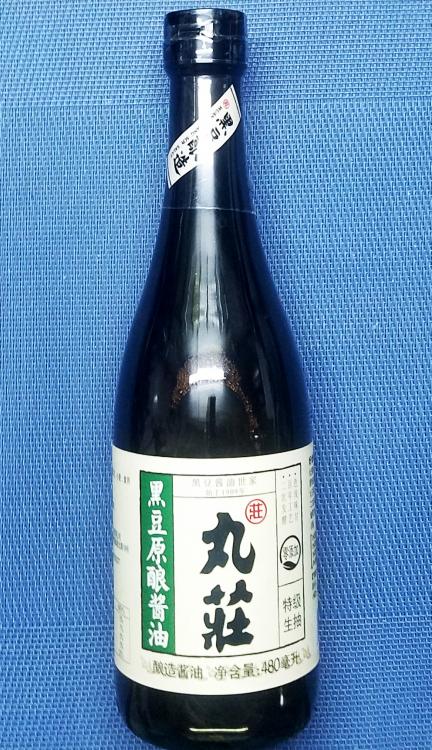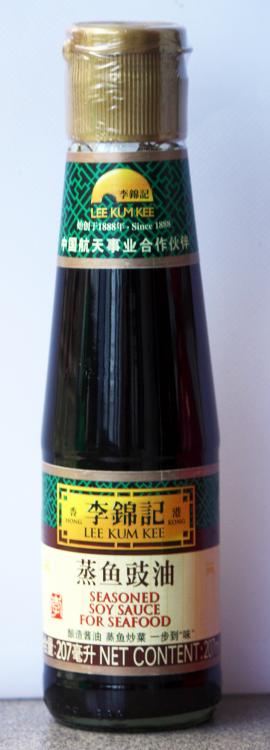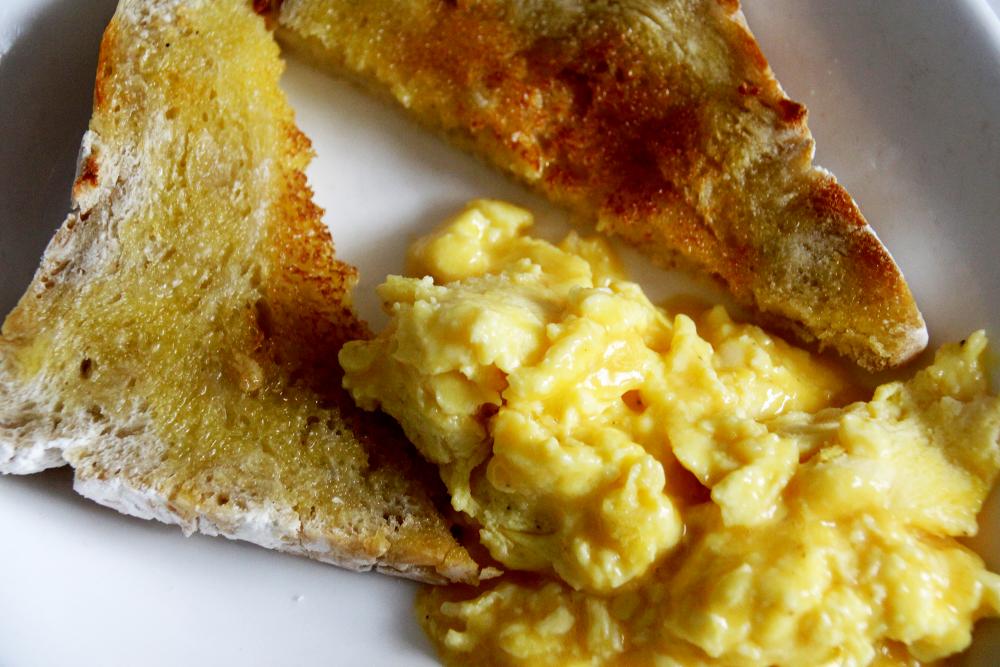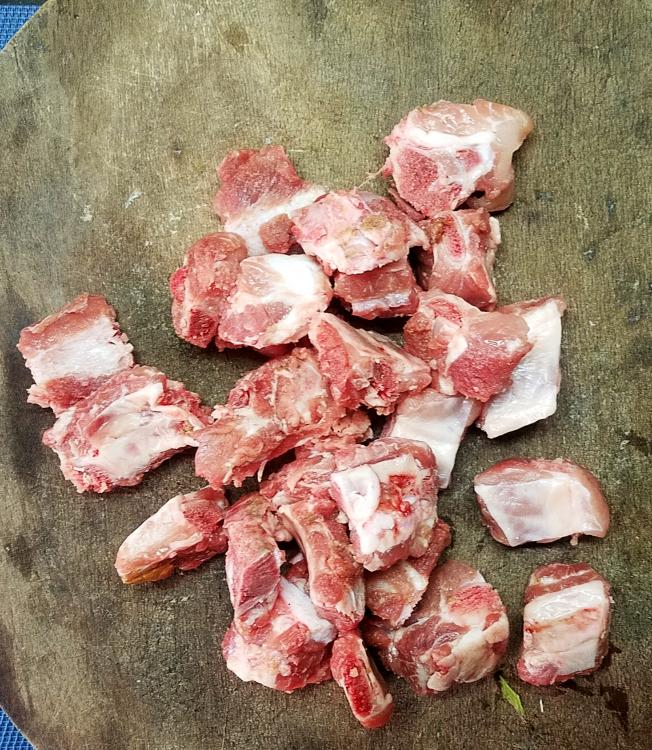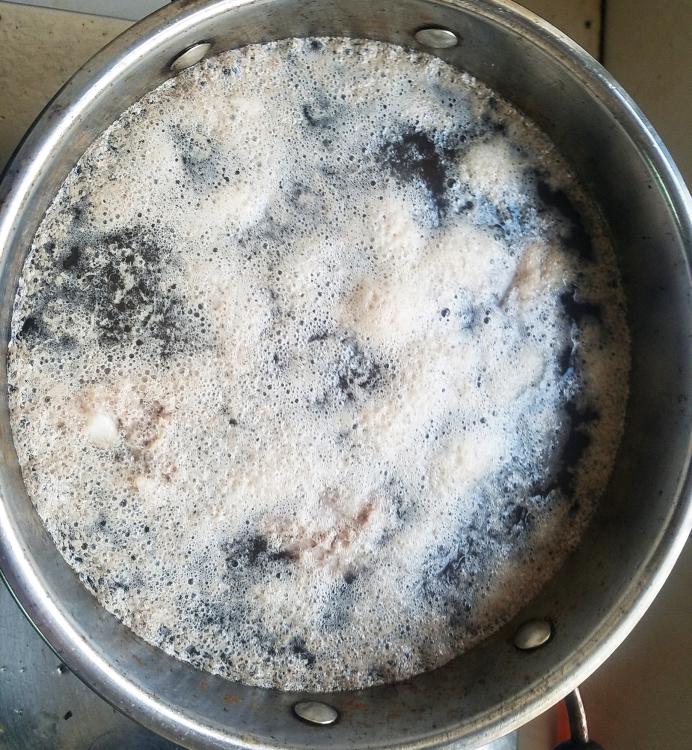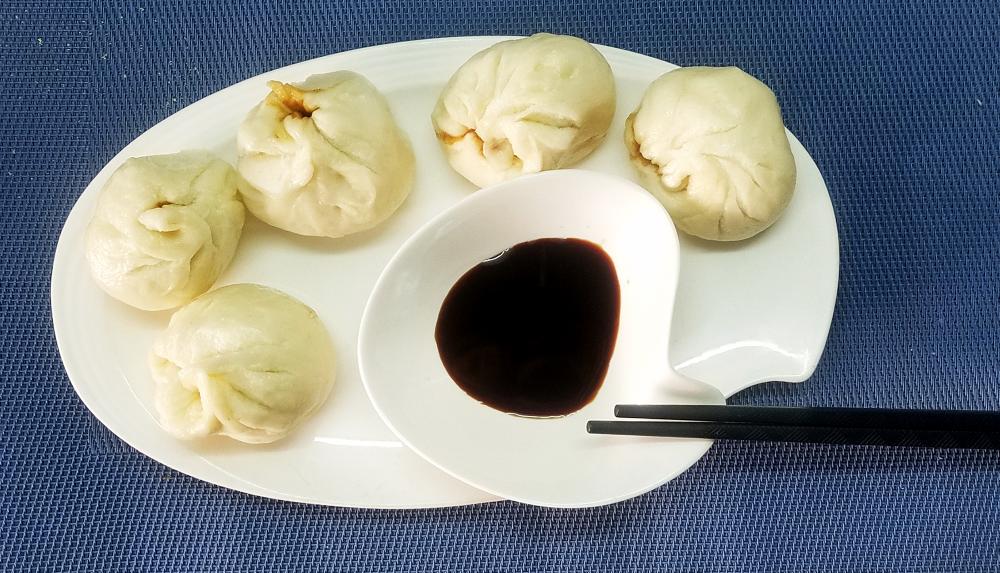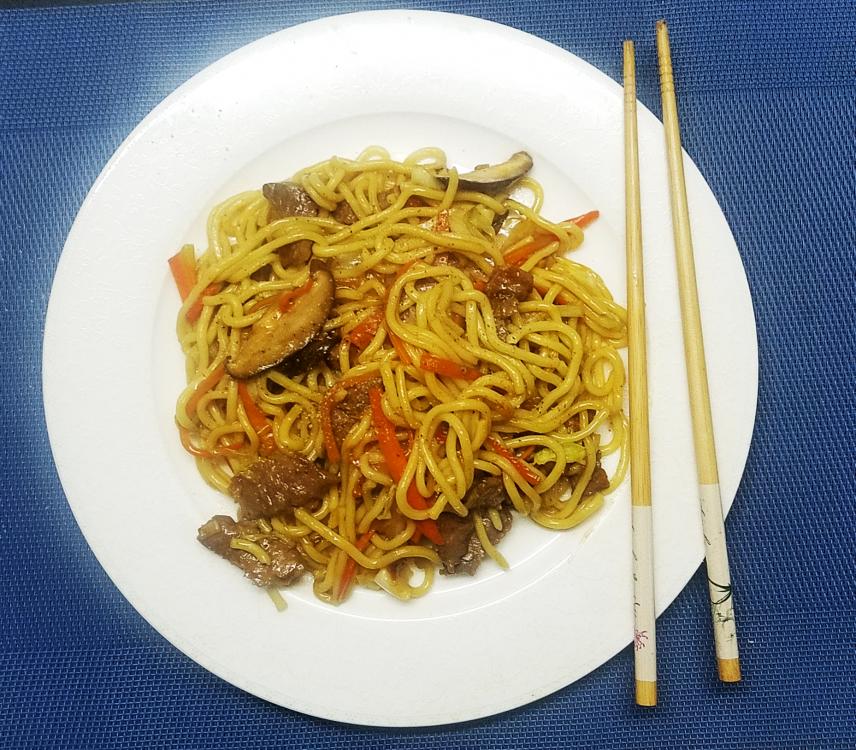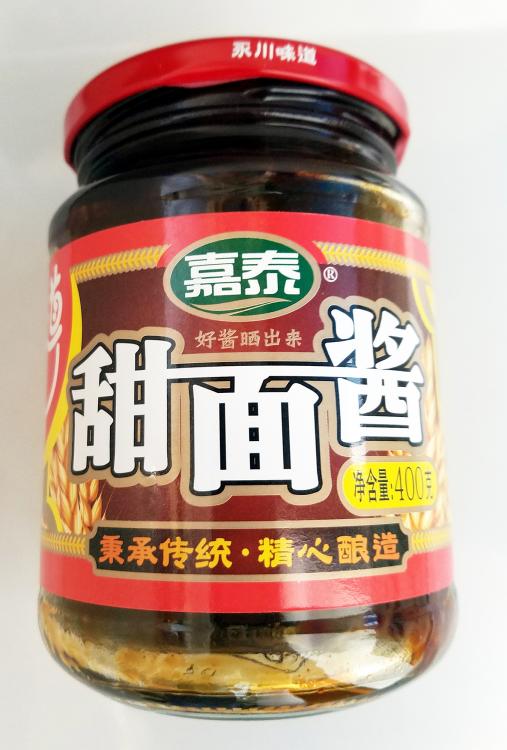-
Posts
15,096 -
Joined
-
Last visited
Content Type
Profiles
Forums
Store
Help Articles
Everything posted by liuzhou
-
Having simmered my pork ribs for 45 minutes and letting them cool I marinated them in garlic, ginger, Shaoxing wine and 豆瓣酱 - dòu bàn jiàng - broad bean and chilli paste. Normally, I'd do this overnight or longer, but I need to eat today! They might get three or four hours instead.
-
Made some chicken liver pâté to be consumed with the crackers I forgot to buy this morning. Damn. Either I go out in the cold, or just spoon the stuff straight into my face. Recommendations?
-
13. There are two kinds of soy sauce. If only. This oft-repeated 'fact' appears on many websites, including on many which should know better, as well as on YouTube videos, but I guess by now you know what I think of them. In fact, world-wide there are hundreds of different types - certainly a bit more than two. I will limit myself to what I know. I intimately know my kitchen and I know China moderately well. So this is only about what I have or can find here. I have six different kinds in my kitchen right now. The generic term for soy sauce in Chinese is 酱油/醬油* - jiàng yóu. This covers all varieties. A less common alternative is 豉油 - chǐ yóu. Light Soy Sauce Most used is what is known in western countries as 'light soy sauce', in China as 生抽 - shēng chōu. Often labelled 'Superior Soy Sauce' in English, this is the go to sauce for much of Chinese cooking, used in many dishes and in marinades or as a dressing or dip. If a recipe does not specify what type of sauce, use this one. It is strongly flavoured and saline in taste, although low sodium versions are also available. Most soy sauce today also contains wheat, so is not usually gluten-free, although gluten-free versions can be found in larger supermarkets. The best should only contain water, soy beans, wheat and salt. Check the ingredients list. If there is no English, then here are the four ingredients in Chinese in the same order: 水, 黄豆, 小麦, 盐/水, 黃豆, 小麥, 鹽. Dark Soy Sauce This is also common. Known as 老抽 - lǎo chōu, this is a thicker, sweeter sauce mainly used to add colour rather than taste. It is also less salty. Cheaper versions often add caramel or molasses - avoid! Light and dark sauces are used together in certain dishes. Organic Soy Sauce The above sauces are also available in 'organic'versions. However, in China there is no legal definition of 'organic', so who knows? Black Bean Soy Sauce The first two sauces I mentioned are, 99% of the time, made from yellow soy beans, but also available is sauce made from black soy beans. To my palate, this variation has a deeper, more subtle flavour. It has become my preferred choice. White Soy Sauce White soy sauce is rarer than the others. It is only available in a light form as it contains no wheat. Otherwise, it tastes the same as the regular type, but is sometimes preferred for presentation in dressings, dips etc. Seasoned Soy Sauce Another light soy sauce, but this time seasoned with sugar, yeast extract and MSG, so sweeter and with more of a umami kick. Mostly used with Cantonese steamed fish. There are many more types which I''ll add as I come across them. Mushroom soy sauce springs to mind. to be continued * Where Simplified Chinese and Traditional Chinese differ, I give both. Simplified is used in mainland China, where as traditional is used by Hong Kong, Taiwan and much of the Chinese diaspora - so there is a good chance of seeing either in Asian markets.
-
- 764 replies
-
- 10
-

-

-
Yes, a fairly standard world-wide technique, I think.
-
Well, I made it through the year from hell! it's still early on New Years' Day, but I'm cooking my favourite pork ribs proper Chinese style, a process that takes all day. Will have for dinner tonight. The ribs were chopped into bite-sized pieces by the market vendor. Step one is to cover the ribs with cold water and bring to the boil. As soon as the water boils, drain it off through a colander. Drain the ribs and wash the pan. This cleans the ribs and gets rid of any scum, adhering impurities etc. I then re-cover with cold water, bring back to the boil and simmer for 45 minutes. Scum Note that no seaoning is added yet. After 45 minutes, drain and let cool. to be continued
-
小笼包 - xiaolongbao. Normally served in groups of 8 but although there was no room on that plate, I did eat the other three, too. With the simplest of all dips. Straight black bean soy sauce.
-
The Most Popular Ready-To-Eat Meal Goes To...
-
Fried fresh noodles with pork, shiitake, carrots, cabbage, garlic, ginger, chilli, green onions. soy sauce, Shaoxing wine. Oh yes!
-
-
Really? I think most people know that. I always make batter with beer. Have been doing so for decades. It's no secret!
-
Two popular dishes round here are a) 啤酒鸭 or beer duck. This is spicy duck on the bone, braised in guess what - local beer. I love it. There are various recipes on the interwebs, but I suggest the Guilin version. The other is 啤酒鱼, beer fish eaten by most visitors to China's most horrible tourist trap, Yangshuo near Guilin. It is carp from the local river braised with bones in a spicy tomato-ey sauce. My dear friend's grandma cooked me a better version in her village about 7 miles from the backpackers ghetto!
-
Yeah, but we are talking about cooking WITH beer, an ancient and worthy tradition. I have no idea what your point is.
-
I often come across interesting articles on food history. They don't usually merit a full topic to themselves, but it would be nice to share any that I've enjoyed. And find any others have enjoyed. So here we are. Foie gras, truffles, birds drowned in brandy: a menu fit for Queen Victoria A royal lunch served at Waddesdon Manor in Buckinghamshire forms part of an exhibition on its kitchen
-
Beef and Guinness is a classic combination. For good reason.
-
Don't get me started!
-

2000 year old “fast food joint” unearthed at Pompeii
liuzhou replied to a topic in Food Traditions & Culture
It's not the first 'fast food joint' to be found at Pompeii, but is the only 'complete' one and by far the best preserved. There are others. -
9 in total. My ramen noodles are not the dried ramen with flavour packs you are talking about. These are fresh vacuum packed noodles with nothing else. I add whatever I fancy, thereby controlling the salt levels, although it's not something I obsess about. It's 1 pm here on Sunday and being retired, I do whatever I want, whenever I want (with due regard to local laws). Anyway, checking the ingredients on a pack of noodles took up a whole 15 seconds of my life. No wonton noodles today. Have other plans.
-
I just checked the locally made and the imported Japanese udon noodles I have in stock. Although both do contain salt it's the last listed ingredient (the lists being in order of amount by law), so not very salty. Same with the ramen noodles I have. I, too, always salt Italian pastas.
-
Looking back at the images you posted in the Pandemic topic, I'd wager that is tianmian sauce you had. It is thicker and darker than hoisin. And less sweet.
-
My go to brand of tianmian sauce 甜麵醬. Apart from being used with Beijing duck, it is used in a number of northern Chinese dishes.
-
Indeed. Noodles and rice are normally cooked without salt. The are intended to be a neutral background to the sauces or other dishes served. When I first came to China, one of my Chinese friends was horrified to see me salt the rice water. I've never done that since.
-
So you soak the pasta for a couple of hours, then boli it for two minutes and call it "two-minute" pasta? It took over two hours.
-
yes


